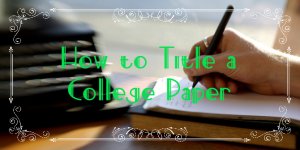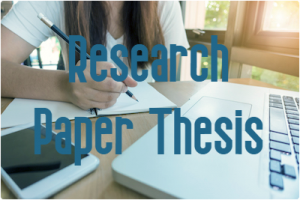How to Title a College Paper – Our Academic Experts Show Here
One of the most important parts of writing a college paper is coming up with the title. Besides, it will be the first thing the reader sees. When the reader does not like it, he or she will probably lose interest. As a result, you will most likely get a bad grade. Hence, it is important to come up with a good title. It must be something that describes what is written on the college term paper. It would be terrible for the reader to think you were misleading him or her.
Before we start with actual writing tips, we would like to remind you that you can purchase cheap essays for sale on our website.

You know the reader would want to get a clear view of what he or she is about to read. In other words, you are in a make or break situation when it comes to coming up with the title for the college paper. It can be a big hit or miss and you may end up regretting thinking of it in the first place. On the plus side, you may be proud of yourself if it ends up being one that sticks in the minds of professors for a pretty long time. Here are a few things to keep in mind when writing a title for your college paper:
Avoid Jargon
Avoid words that have nothing to do with the entire college paper. This is not the time to add words just to make it longer. There is no need to make it long as long as the main point is already present. In relation to that, it is important to avoid jargon in your college paper too. Yes, readers would know right away if you are using jargon so better take that out or they may think that you like using jargon. It would be better to get to the main point immediately as there is no need to squander around stuff that has nothing to do with the main topic.
Make it Short and Simple
In relation to the previous statement, there is no need to make the title pretty long. It would not leave a good image on the person who made the college paper. Also, making it too short would not be a good idea either. In fact, it should be ideally 5 to 15 words in length. Anything more than 15 words would also be a bad idea as you may consider trimming it down a little bit. A long title would not raise your grade so it would be better to not make it long. Furthermore, the right combination of words would also come into play. It is possible you have a good short title but it may be better to rephrase it a bit so that it would sound a bit better than it already has.
Follow Instructions
The professor may have given specific instructions with regard to the title. Hence, it is important to take note of all those directions so you won’t get a bad grade just because you did not follow instructions. That would hurt as it is not that hard to follow instructions. There are times when the professor would give specific instructions regarding the font style, font size, and even spacing. We will never know why he or she would give those specific instructions. The only important part is that you follow them or your college paper maybe the odd one out of all the college papers that were submitted. You know you would not want the faculty to be talking about your college paper that way.
In conclusion, titling a college paper is one of the hardest parts. You would have to do a lot of trial and error and getting the opinion of so many people. In the end, it is going to be worth it once you arrive with a title that everyone would love. Of course, the more people that approve of it, the bigger chance your professor would like it too. Why not get the opinion of students who were under that same professor? You must make sure they passed with flying colors though. Otherwise, it would be useless to get their opinion. Once you have a good title, there is no doubt you would look forward to having everyone read it.


